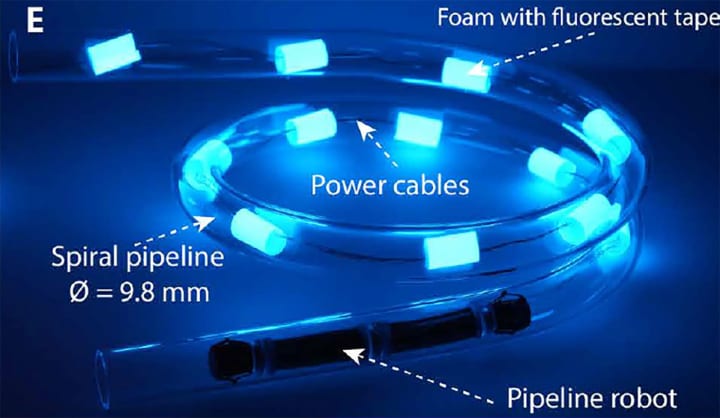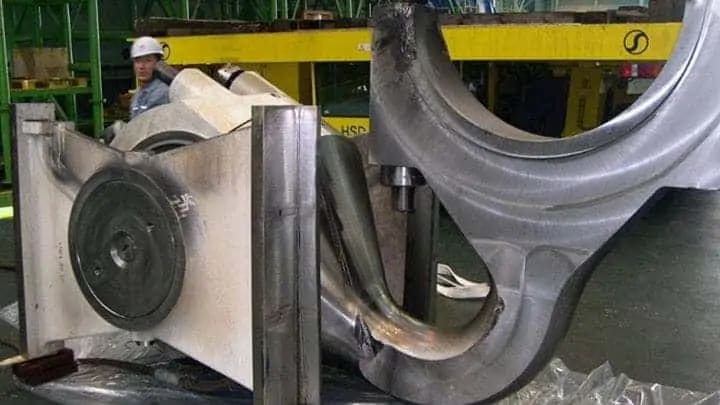A Chinese Worm in Your Pipework - Coming Soon
In your engine not your intestines, but it could check out your big end lubrication

Chinese scientists have developed a tiny wormlike robot that can wiggle into tiny pipes to inspect them with an endoscopic camera
In the latest research, Chinese University of Tsinghua’s (Tsinghua) team has come up with a small camera-equipped robot that can navigate pipes in aircraft engines and oil refinery machinery.
Why bother?
Dismantling complex machinery to investigate problems is time-consuming and costly. Down time means lost production or use and that can be very expensive in a capital-intensive business such as an airline or oil refinery.
Larger robots of this nature are already in use in nuclear power stations (using different motion enablement), for example, but miniaturisation to this level (10mm diameter) has been a challenge. Modern materials have helped as has a primaeval motive mechanism.
The dirty details

“Our robot was designed with soft, elastic materials, and thus, with enough force applied, it could be bent to different shapes,” the team wrote in an article published in the peer-reviewed journal Science Robotics on 25 May 2022.
[We] proposed a type of smart material–driven pipeline inspection robot (weight, 2.2 grams; length, 47 millimeters; diameter, <10 millimeters) that could fit into pipes with sub-centimeter diameters and different curvatures.
Peristalsis
The robot worm moves through a pipe using peristaltic principles, much as we move food through our own pipework during digestion (inverted), trailing a power and comms cord (the worm, not us).
The front of the worm expands and locks against the pipewall, and then it contracts longitudinally pulling its body forward. Then the rear locks and the worm expands forwards.
We adopted high–power density, long-life dielectric elastomer actuators as artificial muscles and smart composite microstructure–based, high-efficiency anchoring units as transmissions.
A fast mover?
According to the paper, the peristaltic pipeline robot achieved rapid motions horizontally and vertically (horizontal: 1.19 body lengths per second, vertical: 1.08 body lengths per second) in a sub-centimeter-sized pipe (diameter, 9.8 millimeters).
Vertical motion? Yes, and it can go around corners and through varying pipe geometries.
I calculate that with a body length of 47mm at 1.19 body lengths per second, that’s about 56 mm/sec or 18 seconds per metre.
I’m not sure if my breakfast moves faster. Or a curry?
Yes, it might even move through a curry as the authors claim it moved through pipes filled with “media (air or oil), and materials (glass, metal, or carbon fiber)”.
Modular construction
Modules of the robot, measuring 47mm in length and 10mm in diameter, can be snapped together with magnets to assemble a longer robot, according to the team from the mechanical engineering department at the Tsinghua University in Beijing.

Capability
Moving slowly, “from the onboard camera view, the detailed topology and texture of the pipe’s inner wall could be clearly monitored and recorded”, when the robot was equipped with a camera with an LED at the front, according to the authors.
Rapid movement caused image blurring so “an anti-shake device and a high-speed camera are necessary to obtain clearer images for high-speed pipeline inspection” they concluded.
Upgrades will include onboard batteries for power as the umbilical cable drag limits range.
Note: I do realise that this robot worm is still too big to check out the lub line to the big end in your engine, unless of course your engine is in a ship and rates 109,000 hp - 81 megawatts.
And the big ends? They're big, big enough for a robot worm.

Other uses
That robot worm would be a handy device for getting bugs into an Embassy through the pipework…
Yes, the Chinese have been busy putting worms in the pipework as well as rats in your drainpipe:
***

Canonical link: This story was first published in Medium on 26 May 2022
About the Creator
James Marinero
I live on a boat and write as I sail slowly around the world. Follow me for a varied story diet: true stories, humor, tech, AI, travel, geopolitics and more. I also write techno thrillers, with six to my name. More of my stories on Medium






Comments
There are no comments for this story
Be the first to respond and start the conversation.